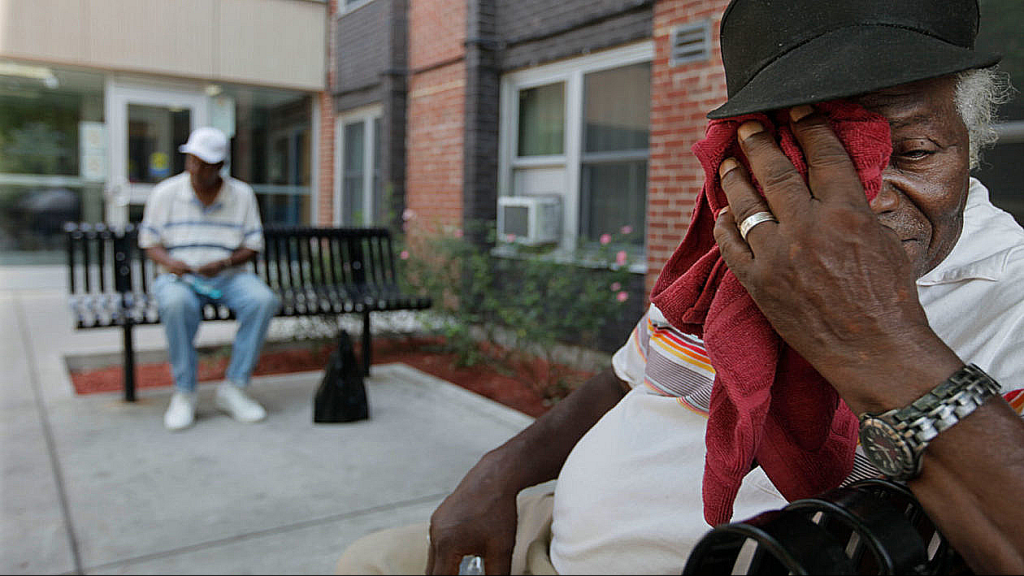Last summer, Rustik Williamson, 66, was working in his backyard and had been at it since early morning. After a few hours, the Columbia, South Carolina retired school administrator, began to feel spurts of lightheadedness and abdominal cramping but shrugged them off. Rustik continued landscaping his yard despite the 101 degree heat. “When I just happened to look out of the window and saw my husband lying on the ground, I screamed! I could not get him to awaken so I called an ambulance. The doctors said my husband had suffered a heatstroke. Thank God, Rus did not have any lasting complications,” says Arnette Williamson.
Heatstroke kills 335 people in the United States every year according to the Centers for Disease Control and Prevention (CDC). Death from heatstroke is highest in the African American community. Blacks are 1.5 times more likely to die from the condition than whites.
So as the temps soar, it is important to recognize the signs of heatstroke and what to do.
Plain and simple, heatstroke occurs when your body overheats after you’ve been exposed to the sun for too long a period. A body temperature of 104°F (40°C) or higher indicate heatstroke. This condition can affect anyone but mostly folks over age 50 are hit hardest. When combined with dehydration, another common symptom in extreme heat, heatstroke can damage the brain and internal organs, and may even be fatal. Heatstroke is a medical emergency, and 911 or any other emergency services should be called as soon someone suspects this to be the cause.
Symptoms
- Muscle cramps
- Heavy sweating
- Pale or cold skin
- Weakness and/or confusion
- Dizziness
- Headache
- Nausea or vomiting
- Rapid heartbeat
- Dark-colored urine, which indicates dehydration
Warning signs
- Fever of 104°F or higher
- Flushed or red skin
- Lack of sweating
- Trouble breathing
- Fainting
- Seizures
Causes
Heatstroke can occur when your body is unable to cool itself down after being exposed to high temps. On hot, humid days, the increased moisture in the air slows down the sweating process which helps keep you cool. When your body can’t cool itself off, your temperature rises and this can make you very sick, or can even be fatal.
There are factors that can make you a candidate for heatstroke:
- Dehydration
- Wearing warm or heavy clothing like a uniform
- Obesity
- Lack of sleep
- Being unaccustomed to the heat, such as moving from a cooler climate to a warmer one
- Taking allergy drugs, diuretics (water pills), laxatives, blood pressure or heart medicines
- Being on antidepressants
- Living in a poorly ventilated space
- Having suffered a previous heatstroke
- Using illicit drugs (cocaine, heroin, amphetamines and ecstasy)
Diagnosis and medical treatment
A doctor will perform a battery of tests to rule out other medical issues that can contribute to a high body temp. Tests may include a CAT scan, blood work and spinal tap. Your kidneys will also be examined to make sure they are functioning normally. Heatstroke and dehydration can seriously tax your kidneys.
You can expect to be hospitalized for one day or more depending on the complications of the heatstroke, if any.
If your diagnosis is heatstroke, a doctor will try to lower your body temp by spraying you with water, blowing cool air on your body, or wrapping you in loosely wet sheets. Ice packs may also be used and placed strategically on your neck, armpits and groin area.
If the preferred tried and true methods mentioned failed to bring your body temp down, a doctor may try flushing the stomach or rectum with cold water. Severe cases may require cardiopulmonary bypass, in which the person’s blood is diverted from the heart and lungs into a collection machine, cooled, and then returned to the body.
In some cases, anti-seizure or muscle-relaxing medications may be given to control convulsions and shivering. Aspirin and acetaminophen (Tylenol) do not help lower body temperature when a person has heatstroke, so these meds should be avoided.
Prevention
Heatstroke is preventable but you have to play it smart when the temps are extreme:
- Hydrate! Drink plenty of water throughout the day
- Stay inside and cool the air by using an air conditioner or fan
- Wear lightweight clothing that have a loose weave
- Skip strenuous activities
- Lay off caffeinated drinks and alcohol as these can contribute to dehydration
Word to the wise…
If you begin to feel nauseous, headachy, tired, get out of the heat and cool off pronto! Get to an air conditioned space, take a cool shower, drink lots of water or even hose off, doing any of these things should bring your body temp down. Treating heatstroke promptly lessens your risk for serious complications like kidney or liver damage, congestive heart failure or heart arrhythmias, coma or death.
If you have suffered a heatstroke in the past, you are susceptible to them. Do not take any unnecessary risks with your health when it’s sweltering outside.
When it’s too hot outside, stay cool, don’t be a fool!
